The annual University of Southampton Science & Engineering Day was held on Saturday 12th March. Attended by over 5000 people, NAMRIP members enjoyed speaking to people of all ages about how we're tackling resistance to antibiotics and infection prevention through exhibits, talks and even a Flash Mob.
Dr Claire Jackson
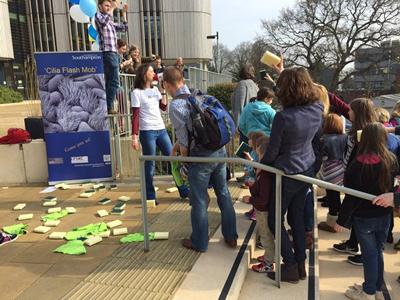
Cilia are moving 'hair-like' structures that line our airways. Their coordinated beating removes bacteria that are trapped in mucus, defending our lungs from infection.
Some bacteria produce proteins that stop cilia movement enabling them to establish an infection.
To demonstrate this Dr Claire Jackson organised a 'Cilia Flash Mob' event.
Around 50 people took part and in time to music re-enacted coordinated cilia movement and then mucociliary clearance (of airway) by passing sponges and clothes hand to hand up the row to represent cilia working against gravity, much to everyone's amusement. Following the event, Claire was delighted to be awarded an Innovation Prize for her event.
Clare is researching how simple sugars can combat bacterial infection and so protect cilia movement.
Professor Tim Leighton, Dr Craig Dolder, undergraduate Freya Malcher and PhD Student Mengyang Zhu
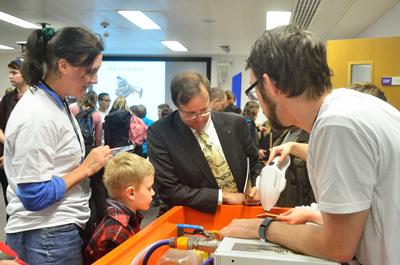
Attendees at the event were able to see Starstream in action.
This innovative device is capable of cleaning items with a low usage of cold water and without any chemical additives.
The key to the technology is to infuse a trickle of cold water with microscopic bubbles and particular frequencies of sound. Unlike cleaning with chemicals, Startstream doesn't leave a trace of anything in the water supply.
To demonstrate, waterproof mascara was smeared onto a tile and then cleaned off using Starstream. Applications being researched include wound cleaning and cleaning of surgical instruments.
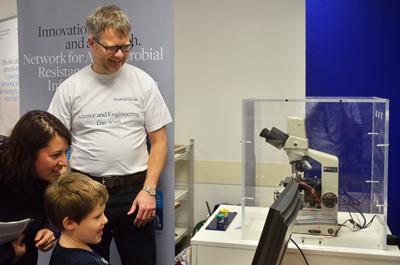
Professor Martyn Hill and Dr Peter Glynne-Jones
Detecting bacteria can be very challenging, like finding a needle in a haystack.
Traditional techniques culture bacteria to multiply them and make them easier to detect but this wastes valuable time, delaying responses to infections.
Professor Martyn Hill and Dr Peter Glynne-Jones exhibit demonstrated how they are using sound waves to capture and manipulate 'bacteria', which will create faster more sensitive diagnosis.
Dr Shoufeng Yang
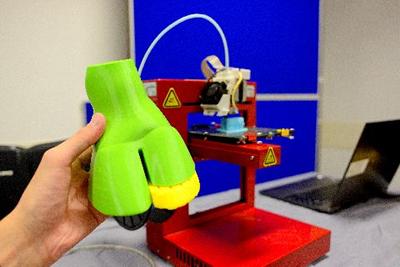
The team demonstrated 3D scanning and 3D printing and how it can be used to combat antimicrobial resistance.
One area being explored is in the area of animal welfare and the creation of a customized cow shoe. These can be used to help lame cows, prevent infection and therefore reduce the use of antibiotics.
A cow shoe produced using 3D scanning and printing was on display (photo on left shows a simulated cows foot printed in green and a customised cow shoe printed in yellow).
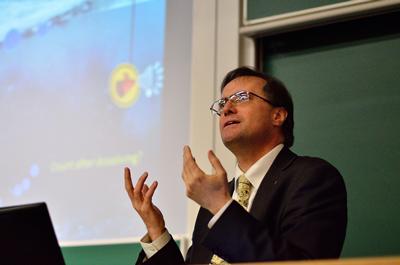
Talks by Professor Tim Leighton
Professor Tim Leighton gave two lectures on Infection prevention, ultrasonic cleaning and related issues, to packed lecture theatres that had standing-room only.
The audience, whose ages ranged from toddlers to the retired, scored the lectures 74% excellent; 20.5% good; 5.5% adequate; 0% poor.